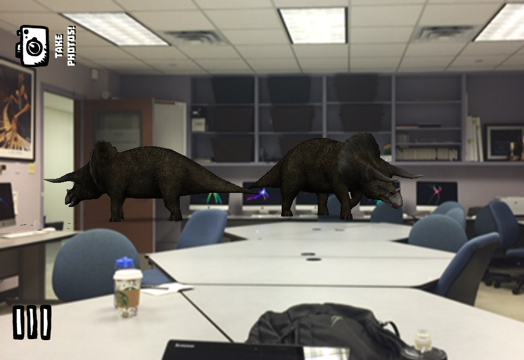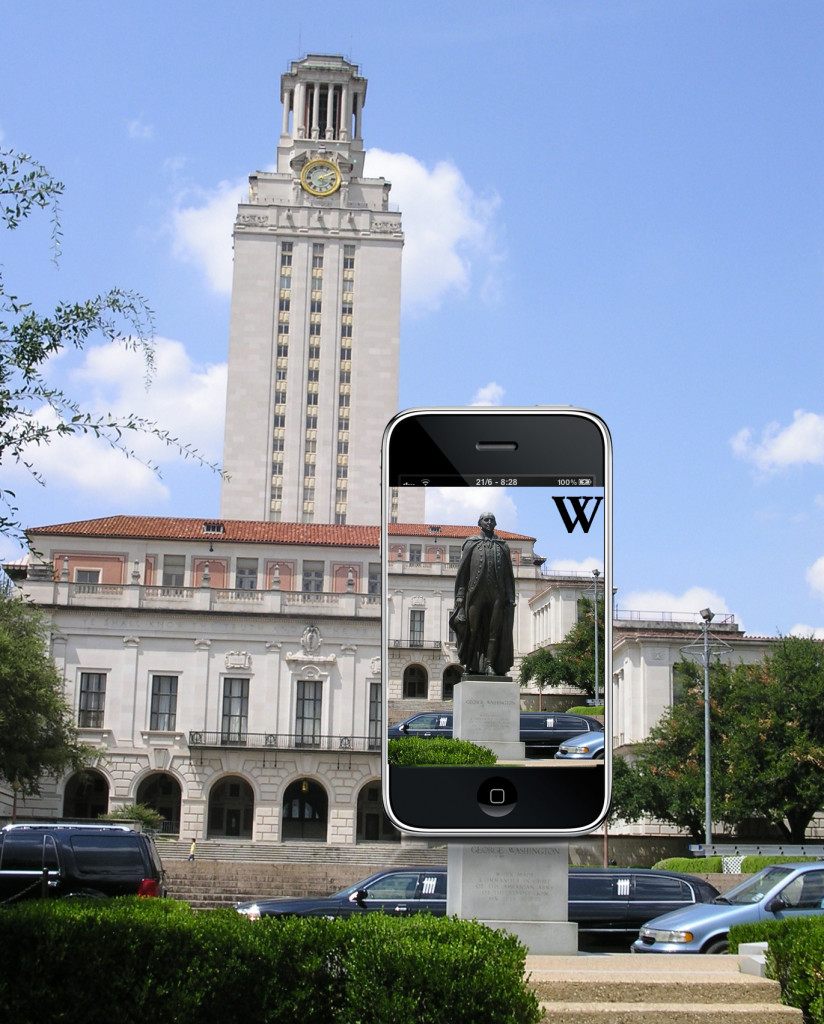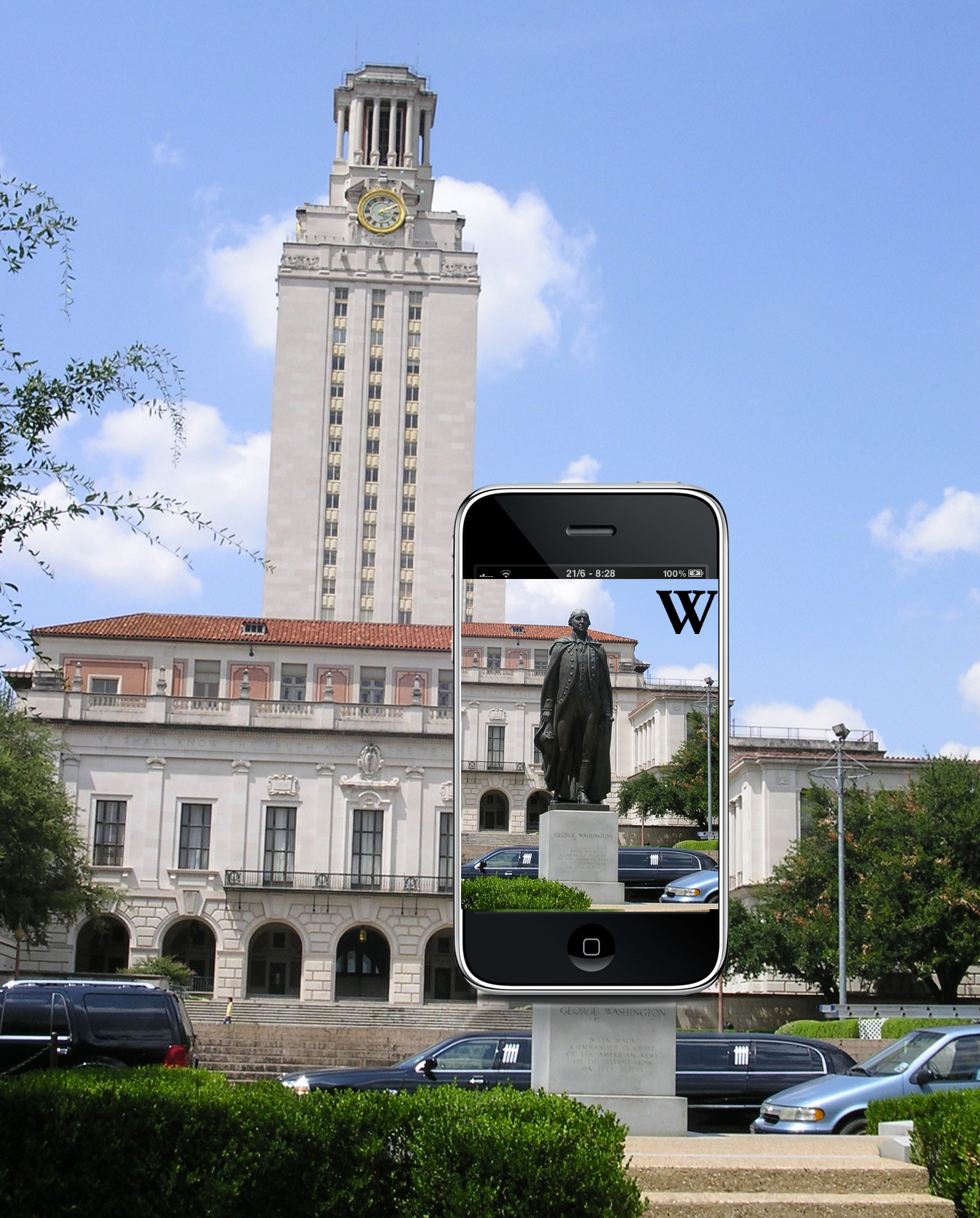The Augmented Reality Research Group is excited to introduce our project for the fall 2015 semester. But first of all, what is augmented reality? Commonly abbreviated AR, it is indeed just what it sounds like: taking the real world around you and enhancing it with the digital world. One of the more common applications of augmented reality is to simply overlay information from the web onto a screen through which you are looking at the real world.

Imagine, for instance, that you are in an unknown city and by pointing your cellphone camera at a restaurant, you get reviews, a menu, and prices on your screen overlaid on the physical establishment itself. Another use is to merely add virtual elements to the physical environment around you. One rather silly example is the popular iOS app Dinosaurs Everywhere, which just generates animated dinosaurs walking around you.

While having dinosaurs walking everywhere can be fun, we would like to harness the power of AR for educational purposes. We are currently designing an application that will provide information about the six Confederate statues that line the South Mall of UT. Given the current debate surrounding the Confederate Flag, we think a virtual tour of these statues is not only timely but also of great pedagogical value. Additionally, and more broadly, we envision this project being used for orientation purposes at the University to introduce students to the wider history and debates around these statues on campus.
In addition to AR enhancing our interaction with the world around us — such as is the case with Google Glass or Google Cardboard — this project will also produce a how-to guide that will aid in the creation of similar content. More than that, though, our stretch goal is to create an app that remotely accesses the South Mall statues, which would enable distant or impaired users the opportunity to navigate through the space and democratize access to this technology. We want everyone to be able to create their own augmented realities!



[…] Ingress has added enjoyment to my daily life. I don’t know that anyone will become addicted to our app, but I believe that we can enhance reality with our work rather than merely adding to it and, as […]
[…] towards the augmented reality app (to see the blog post for the actual project, click here), then, a logical place to start for its educational content would be the Littlefield Fountain and […]